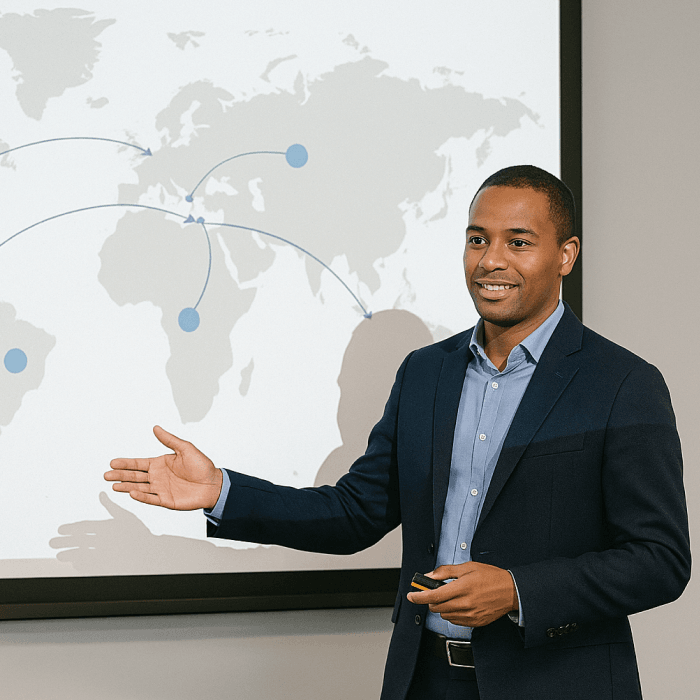Updated: January 24, 2024- 7 min read
Job titles can often be confusing, especially in a profession as fluid and varies as Product Management. Each company has a different understanding of what each PM job role entails, as the role depends on the industry, the company, and the product. A Product Manager at a tiny Fintech startup will be very different to a Product Manager at YouTube.

Even so there is a standard hierarchy in place, which looks like this:
Associate Product Manager
Junior Product Manager
Senior Product Manager
Principal Product Manager
Director of Product Management
Vice President of Product Management
While the day-to-day activities may vary across companies, job titles are still indicative of what the company will expect from you. They’re especially helpful when you’re job hunting, aka if you’ve only had six months experience in Product Management, then you probably won’t be looking for Principal Product Manager roles just yet!
Why is that? What exactly are the differences between these roles? While the job titles are pretty subjective, there are a few clues we can use to figure out if someone is one or the other, and if you’re ready for that promotion!
Here, we’ll take you through the main differences between a Product Manager, and a Director of Product Management.
If you’re looking for a more complete breakdown of different PM jobs, check out our guide on decoding job titles.
What Does a Product Manager Do?
A Junior PM, usually just referred to as a Product Manager, is usually in the earlier stages of their career. Often confused with Project Managers, you can think of a PM as the conductor of an orchestra. While they don’t play the instruments themselves, they know exactly what the symphony should sound like and how to help the musicians achieve it.

Some of the tasks you’d usually find in a Product Manager job description are:
Strategic Work:
Lead the strategic side of a product from development to deployment. Collaborate with leaders in business from sales to marketing to operations to development.
Tactical / Execution Work:
Facilitate the product lifecycle from inception to release and analyze the results to measure success.Meetings:
Delegate work, give quick overviews on how on track the team is, present the final product, share key insights, and more through meetings.Communicate with Seniors:
Regularly give status updates to superiors. A good PM is able to take a roadblock and turn it into an insight or an opportunity.Talk to Customers:
Know the market and its customers and always have the users in mind. Look for feedback from users to know how hot or not the new product or feature is.Work with Consultants & Vendors:
When working with a new vendor or a consultant, PMs must be in the loop on what the vendors what to change or what new system they are implementing.
What Does a Director of Product Management Do?

A Director of Product Management has usually wracked up more than a few years of experience in product. Often the roles look quite similar in terms of daily tasks, but with a few distinctions.
Rather than managing products, Directors of PM manage the people who manage products. In larger companies where there are teams of PMs working on individual projects, a Director of PM will work with them to keep everyone working in harmony with each other.
They do more of the high-level thinking, and work on maintaining the product vision and keeping it communicated consistently across all product teams.
They oversee product development, but with more of a macro view than a Junior PM, who zooms in and out.
The Main Differences:
1. Leadership Qualities
All Product Managers need leadership skills, but Directors of PM are in a position of leadership. It’s a subtle distinction, but it’s perhaps the thing that separates the most junior and senior managers. Generally, your first PM role(s) will be very hands-on. You’d be conducting market research, working on the product strategy, and running around between all kinds of cross-functional teams.
Directors of PM do more of the high-level work, and work on empowering others to do the nitty-gritty work. They’re also more responsible for the career development of the people in their teams. Depending on the size of the company, a Director of PM will also be responsible for recommending their teammates for promotions, negotiating compensation, and handling conflict resolution.

2. Outcomes Over Outputs
While it’s something that is starting to change, the trend has been that PMs focus on outputs, whereas Directors of PM focus on outcomes. (You can find our full breakdown of Outputs vs Outcomes right here!)
While it’s good for PMs to also keep the outcome of a product or feature in mind, it’s the Directors of PM who more actively work towards it. They work on defining what the desired outcome should be, and work with users after launch to figure out what improvements or new products could be built.
3. Depth Of Experience
Seniority is often the result of cumulated years of experience. This doesn’t necessarily have to be in the product industry specifically. Someone who has spent time as a Senior Engineer may have collected the right skills for a Senior Technical Product Manager role. There is no single idea of an ideal candidate for a Senior role, and there are a myriad of ways to collect enough experience to become one.
There is no easy formula that says ‘X years of PM experience leads to Senior PM role.’ If someone has been a PM for ten years, but hasn’t branched out and tried new things or developed their skillset in any way, they might be a less ideal candidate compared to someone with five years experience whose skillset is broader and deeper.
4. Influence Without Authority
As a PM, you have to influence without authority. This means that you have to guide the teams you work with toward a common goal without actually being authorized to tell them what to do.
This is done through a mix of making personal connections, being empathetic to their problems, and making sure your decisions are backed up with data. Once you’ve built up your reputation as a seasoned professional, this gets easier with time. The longer you are established within your organization, and the longer your track record of success, the easier this will be.
As a Director of PM, you can usually expect to be entrusted with more authority. Your words carry more weight thanks to your position.
Am I Ready to Climb The Ladder?

Climbing the PM ladder isn’t often as simple as ‘have I done this job for long enough?’
When you’re ready to progress in your product career, you’ll need to make the choice between moving more into people management, or to continue primarily as a senior individual contributor.
If what’s keeping you back from moving forward in your career is that you don’t want to stop your individual work, or that your goal is solely to move into more of a people-leader position, fear not. Not all Senior PM roles are created equal. If you’re faved with moving into a role that doesn’t suit you just because it’s the next natural step, it’s not the end of your PM career.
You could look at transitioning to a Senior PM role within a different team at your company, or even to a new company. The perfect next step is out there, you just have to have the grit and hunger to find it.
Updated: January 24, 2024





